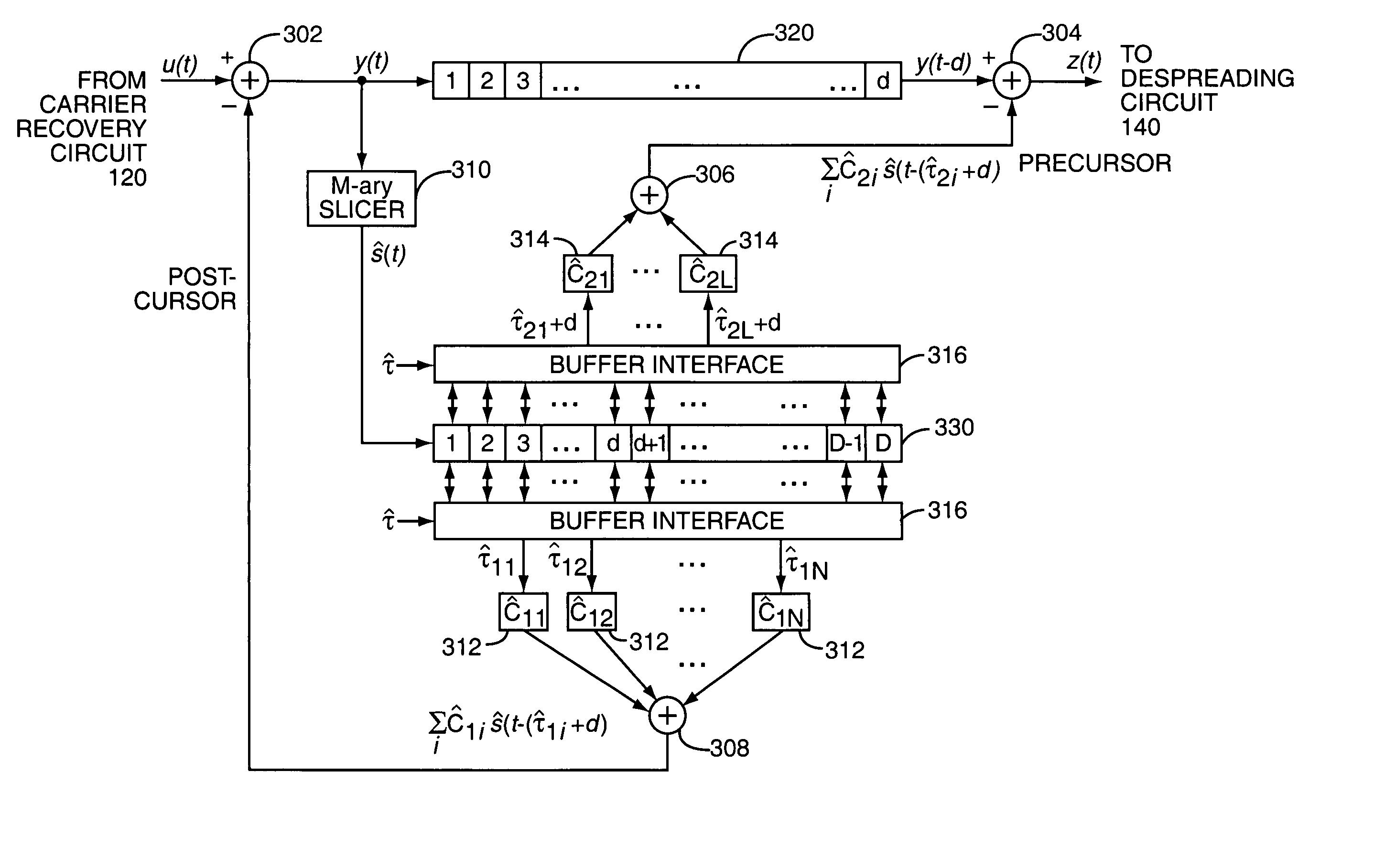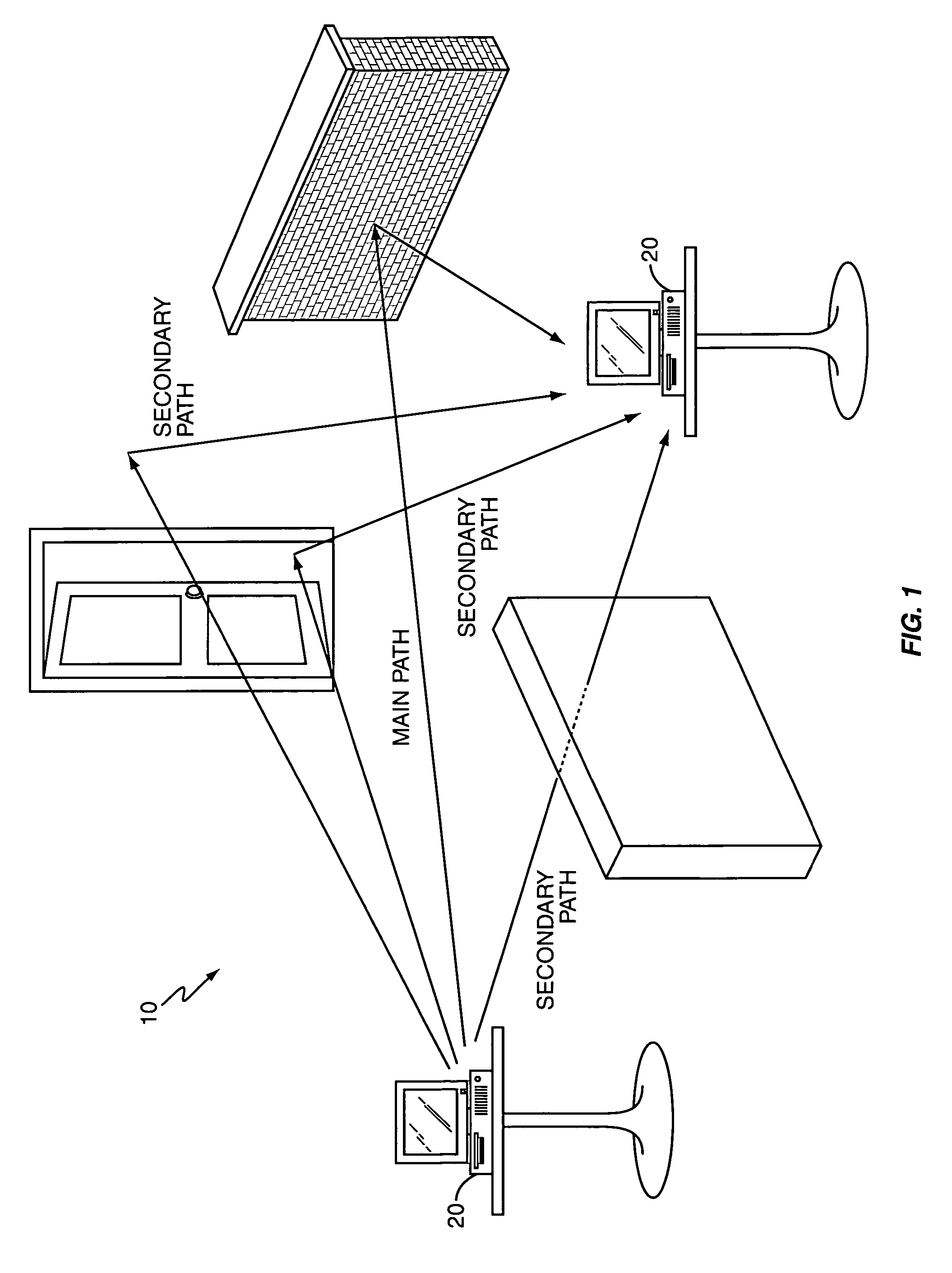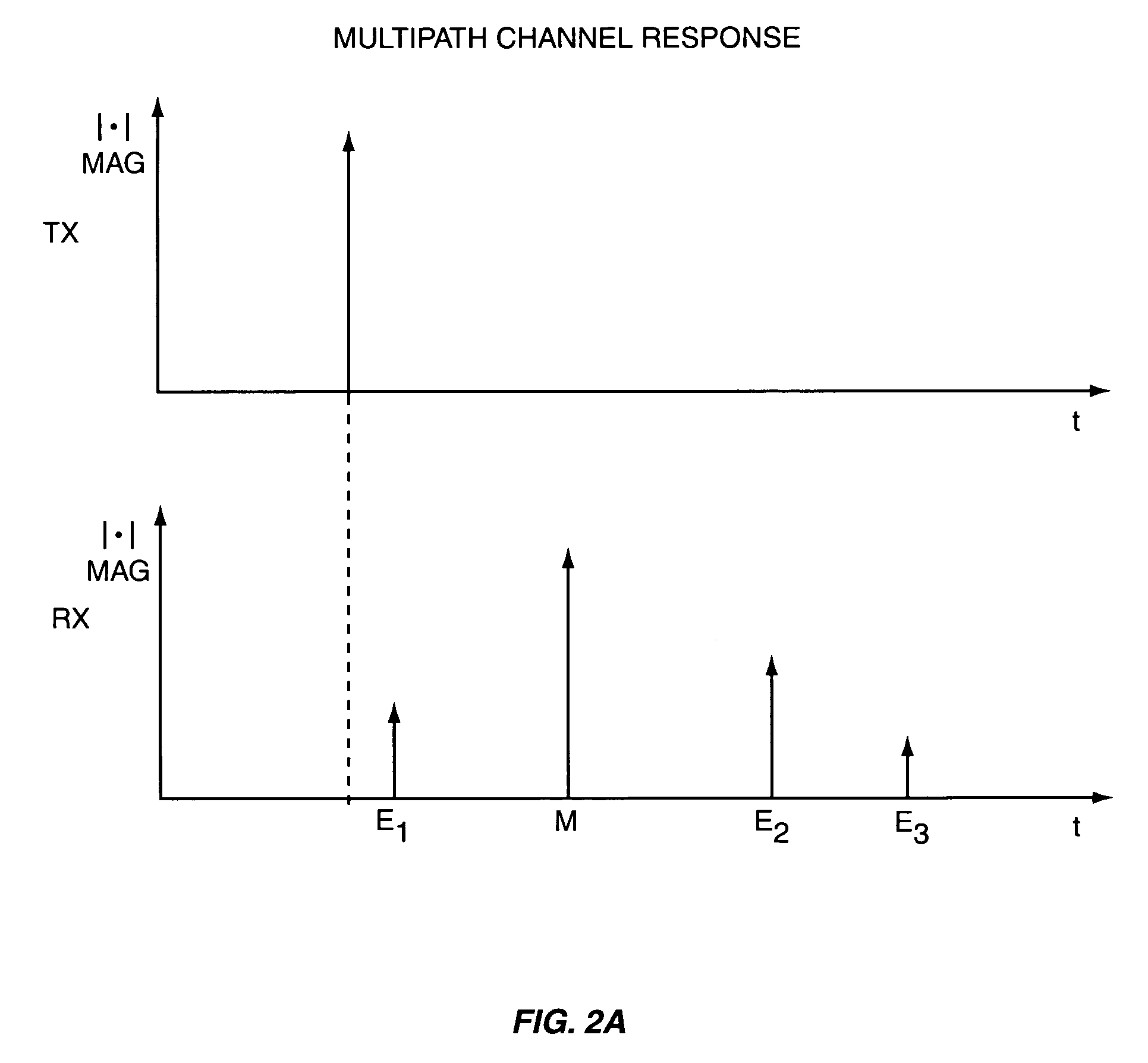Method and apparatus for multipath signal compensation in spread-spectrum communications systems
- Summary
- Abstract
- Description
- Claims
- Application Information
AI Technical Summary
Benefits of technology
Problems solved by technology
Method used
Image
Examples
Embodiment Construction
[0037]FIG. 1 illustrates a wireless communications environment 10 subject to multipath interference. While FIG. 1 depicts two PCs 20 in wireless communications with each other, as might be expected in a wireless LAN environment, the present invention may be advantageously applied in any DSSS communications systems subject to multipath interference. As illustrated, multipath signals arise from intervening obstacles between a transmitter and a receiver—in this case, a transmitting PC 20 and a receiving PC 20. While not explicitly illustrated in FIG. 1, it will be readily appreciated that the multipath signals received by the receiving PC 20 may be subject to differing levels of attenuation and phase shifting based on the specific signal path followed by each signal. In the context of this disclosure, the main path signal is not necessarily the signal following the most direct route to the receiver; rather it is the strongest of the received multipath signals.
[0038]Because the multipat...
PUM
 Login to View More
Login to View More Abstract
Description
Claims
Application Information
 Login to View More
Login to View More - R&D
- Intellectual Property
- Life Sciences
- Materials
- Tech Scout
- Unparalleled Data Quality
- Higher Quality Content
- 60% Fewer Hallucinations
Browse by: Latest US Patents, China's latest patents, Technical Efficacy Thesaurus, Application Domain, Technology Topic, Popular Technical Reports.
© 2025 PatSnap. All rights reserved.Legal|Privacy policy|Modern Slavery Act Transparency Statement|Sitemap|About US| Contact US: help@patsnap.com



